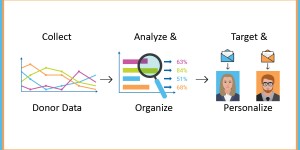Designers and prepress professionals use a private language to describe images and their formats. Let’s open the curtain a bit to give you a peak into the secret language of image file formats.
Why So Many File Formats?
When it comes to bitmapped (scanned) images, we have to deal with a series of compromises between quality, features and file size. Different file formats are better, or work at all, for different uses. We have three basic uses for an image (if we agree not to talk about video): the Web, business use and four-color printing.
One of the reasons to learn our secret language is this: you can successfully save a high-quality scanned image in many formats, so you have to know which one to use for which purpose. Once we scan an image, we bring it into Adobe Photoshop for color correction and manipulation and to save it for different uses. This brings us to our first image file format: PSD, which is Photoshop’s native file format. This format is only good for use in Photoshop and other image processing programs. You would never use a PSD file as the final or output format.
Web Image Formats
There are three image file formats that work well on the Web: GIF, JPEG and PNG. Because the Web is all about speed, everything on the Web must be as small as possible. Therefore these formats use some sort of image compression to make them appear in your browser as quickly as possible. There are two kinds of compression, lossless and lossy. Lossless does not remove image information, lossy does.
+ Designers use GIF files, a format created by CompuServe, for icons and other Web graphics because of its wide Web browser support. Designers don’t usually use the GIF format for scanned photographs because it only supports 256 “indexed” colors per image.
+ JPEG is a lossy compression scheme that also has wide support. The more compression one dials up with JPEG, the smaller it gets but the more visual artifacts appear in the image.
+ PNG files are the newest format of images. They are great for the Web, but because they are lossless, they don’t compress as small as JPEG images.
Business Printing Image Formats
For business use (laser printing, Microsoft PowerPoint and so on), all of the above image file formats work, as well as many formats native to either business programs or operating systems. For instance, the Windows BMP and the Mac PICT are common business image formats, and they can support full-color RGB images. However, they don’t support CMYK printing or any kind of compression. Therefore designers don’t use most formats in this category for four-color printing.
Four-Color Printing Image Formats
There are three common image formats for four-color printing: TIFF, EPS and JPEG. All three work well, and all three support different features and different kinds of compression:
+ TIFF supports “clipping paths,” which are layers that control which part of the image prints. Designers often use clipping paths to hide the background of product shots. Designers compress TIFF images with a lossless image compression scheme called LZW.
+ EPS supports JPEG compression and clipping paths.
+ JPEG also supports JPEG compression and clipping paths.
We hope you enjoyed this glimpse into the secret world of image file formats.
More Insights to Enjoy:
+ Tips on Building a Better Brochure
Sign up today to receive future issues of our award-winning newsletters to ensure you receive all of Action’s Insights.
© Action Graphics, 2013.



